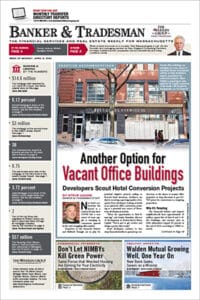Boston’s new chief of planning says active development proposals will move forward under existing guidelines before the city revamps its permitting to achieve Mayor Michelle Wu’s new goals for affordability, climate resiliency and equity.
“In any change process with things going through an advertised set of rules, you want to avoid changing the rules,” said James Arthur Jemison II, a U.S. Housing and Urban Development official who will begin work at Boston city hall in early June. “[Developers] have spent significant capital on the acquisition of land and plans, and we want to create a situation where things in the pipeline today have a chance to be heard under the existing rules. As new things come along, they’ll have a new path and set of rules.”
The Boston Planning & Development Agency is reviewing such major developments as the 6.5-million-square-foot Dorchester Bay City and the 1.1 million-square-foot Channelside project in the Seaport District, which were conceived under the city’s existing rules for development review.
Jemison’s newly-created position will oversee real estate planning by city hall departments while leading the BPDA, where the board of directors is expected to vote on his appointment as director at their May 12 meeting. Brian Golden announced his departure this month as the BPDA director after an eight-year tenure, and Wu is seeking to institute a “planning-driven” approach to approvals rather than a reactive one to development proposals.
In an interview with Banker & Tradesman, Jemison hinted at potential changes to how project designs are reviewed. Major projects also require input from the Boston Civic Design Commission, a panel of architects that reviews projects over 100,000 square feet or that have special significance in the urban landscape.
“Having taken projects to BCDC as a private development consultant, I know the impacts their comments can have in what gets developed and the cost,” he said. “When you’re a developer, the majority of your soft costs come through architecture and designs. With enough lead time and clarity about what’s expected, Boston developers can really do amazing things. Is that at the end of the review, or early enough to have something great happen?”
The BPDA also has been updating its design guidelines for life science buildings, as the lab boom spreads into new neighborhoods such as Back Bay and closer to residential buildings. Jemison said he’s still getting up to speed on the effects and their implications for policy changes.
Jemison’s arrival, and appointment of BPDA official Devin Quirk as the agency’s deputy chief of operations and organizational transformation, could be followed by additional structural changes to the BPDA that require approval of the state Legislature. Wu is seeking to separate the agency’s planning and permitting functions while ending a series of neighborhood urban renewal plans.
“We’ll be spending time looking at the text of the Home Rule petition, but that’s after we’ve thought through the format and engaged citizens on their thoughts and concerns. We need citizens to be involved, but there’s got to be predictability for the community because that’s where the strength is,” Jemison said.









